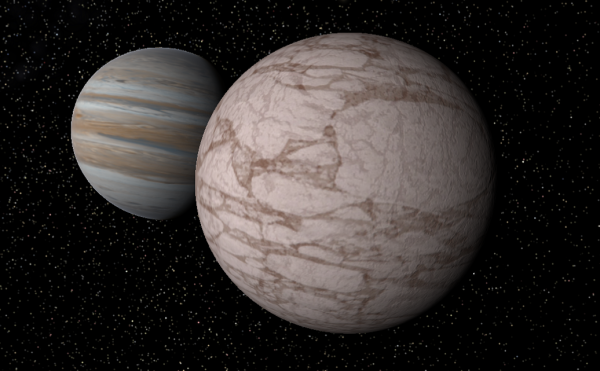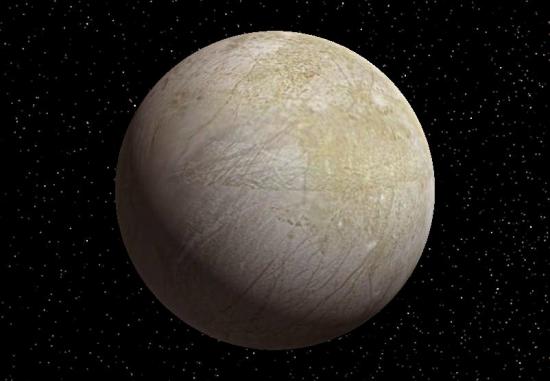BY LETTER
Europan Type World
Worlds with a ocean of liquid water under a thick ice crust | |
 Image from Steve Bowers | |
| Eucleia (Chara b I) a tidally-heated icy moon of the Europan type | |
In essence, these are LithicGelidian worlds heated by consequence of their tidal stretching. Europan type worlds are often found as moons of larger worlds, where tidal interactions are important. They also occur as individual planets, especially in crowded planetary systems.
The surfaces of these worlds are relatively smooth, the crust being made up of ice that ranges from less than a kilometer to several tens of kilometers in thickness. The surface smoothness is a result of that crust constantly being moved and resurfaced by the underlying geology, which produces an oceanic layer of liquid water ranging from just a few to hundreds of kilometers in thickness.
 Image from Steve Bowers | |
| Europa, in the Old Solar System | |
Major categories include the HyperEuropan, SubEuropan, EuEuropan, and Poseidonal sub-types.
Example; Europa
Related Articles
Appears in Topics
Development Notes
Text by John M. Dollan in his Planet Classification List
Initially published on 24 October 2001.
Initially published on 24 October 2001.






